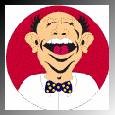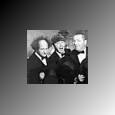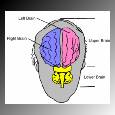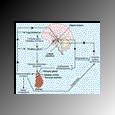

Humor is a concept humanity has been familiar with from very early stages
in our development, however the scientific measurements of the process
is just beyond its infancy in the grand scheme of things.
What registers as being funny and why? Why is smiling and laughing
universally inborn? What parts of the brain control registration
and processing of jokes? And finally, what parts of the brain control
the motor functions seen through humor? These questions will be addressed
in the following areas of this site.
Through the ages we have strived to keep laughing even in the face of impossible things. Comedy has existed through Vaudevilles, circuses, plays, and stories all throughout humanities recorded history. Even early TV and radio programming seemed to reach out to try and "tickle the funny bone" of the world.

Humor seems to be widely based on a cultural and personal basis. What an American would find funny might not be the same as what somebody of Japanese culture might find comical. American humor seems to be played off the misfortunes of others and usually has something to do with sex, violence, unexpected events, race, age, or something taboo to societal norms.
for the love of God don't click HERE
Now see, that was funny. It combined a few key structures of humor including being unexpected, and taboo.
 Brain
Brain 

As shown here the brain is clearly divided into two hemispheres each controlling separate characteristics about human thinking. The left side of the brain is the logical literal thinking mind of math and science, where as the right side controls our artistic and creative thinking skills. Humorous themes often try to play of both sides in order to be successful, making the observer pay careful attention to detail and perform a little reasoning in order to arrive at the key moment in the joke (punch line) where a reaction is then evoked such as laughing.

Laughing and smiling are inborn traits in primates and humans alike.
Babies often smile or laugh when they receive attention or get what they
want right from the start. Evolution has given species a way of communicating
to the parenting figure that what's being done to them is good or bad by
giving simple gestures or sounds before they are able to process more advanced
displays or language.
LINKS
Below are a list of LINKS to other Psychology sites if what I've said isn't enough for you . . .
History of Psychology
American Journal of Psychotherapy
The Brain
CyberPsychology
Theoretical Psychology